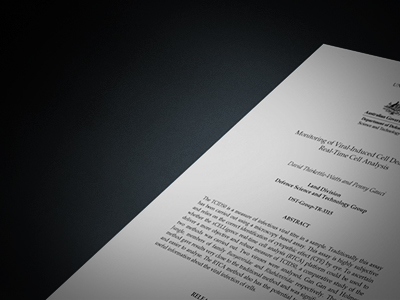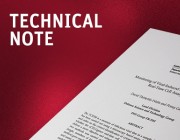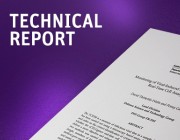Unmanned Systems (UMS) have the potential to provide significant benefits when used in military operations that are dangerous, dirty, and/or dull; the principal benefit cited in a variety of literature is of reducing the risk of human casualties.
Scientific publications

Our scientific and technical publications are an important vehicle for the dissemination of our work.
We have several goals for our publications:
- To communicate the results of the research program to clients and fulfil our reporting responsibilities to the Department of Defence.
- To record the results of our research program.
- To communicate the results of scientific research and technical information to Australian industry and academia.
- To increase awareness of and enhance the reputation of DST Group.
For enquiries about science and technical publications, or to request a publication please contact qfgt.erfrnepu.choyvpngvbaf@qrsrapr.tbi.nh
Latest scientific publications

This technical note considers a sensor that alternates randomly between working and broken versus a target that reluctantly gives away glimpses as a homogenous Poisson process.

This study investigated information exchange and processing under the pressures and limitations of first respondents at the tactical edge to provide insight into transitioning reference information to a dynamic 'real-time' paradigm.

This technical note considers processes that alternate randomly between 'working' and 'broken' over an interval of time.

This report thus investigates the subject of factor screening, for stochastic simulation models, and overviews several solutions to this problem. In particular, sequential bifurcation will be shown to provide a very efficient approach to the problem of factor screening, in comparison to standard one factor at a time classi cation methods.

Body armour is used by police and military personnel to provide passive protection of the vital organs of the thorax and abdomen against ballistic, fragmentation and stab threats. Optimising the amount of coverage provided by body armour requires consideration of the trade-off between the passive protection afforded by the armour and its potential to hinder wearers' ability to actively protect themselves.

Satellite communication, navigation, surveillance and meteorology services are key enablers for the ADF's battlefield awareness and air and missile defence

A suitable model of the return ground clutter is required to help assess the performance of over-the-horizon radar. Currently, models for the clutter reflected from the sea exist but there are no models for the backscatter from land. The backscatter coefficient, which characterises the backscattered power, can be determined by considering the difference between observed backscatter ionograms and synthesised ionograms.

A general method used to quantify uncertainty in theoretical corrections to unsteady pressure measurements through tubes is documented in this report. This method is based on a wellvalidated theoretical model, which produces a transfer function that may be used for correcting unsteady pressure measurements through an Nt number of tubes and Nv number of volumes. The uncertainty estimation methods employed are in accordance with AIAA Standards.

This work investigated a method for predicting future trends in peer-reviewed publication data related to science and technology. The developed method use non-linear regression to fit a particular type of s-shaped curve

